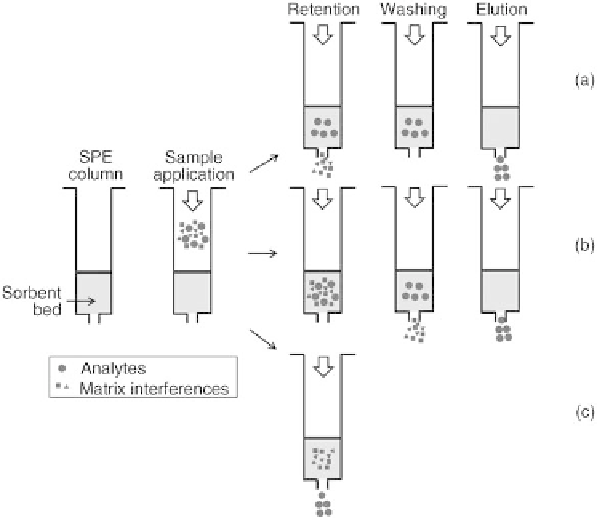Agriculture Reference
In-Depth Information
Figure 8.2.
A scheme of SPE column modes and functionality. (a) Selective extraction mode. (b) Selective
washing mode. (c) Selective elution mode.
The analytes are then eluted by a small volume of pure organic solvent (methanol or
acetonitrile), which disrupts mycotoxin
antibody bonds by protein denaturation. The
most comprehensive studies on this topic have been published by Turner et al. [18]
and Rahmani et al. [4].
Although both multifunctional IAC and SPE columns are commercially available
for all of the main regulatory signi
-
cant mycotoxins, these columns are still not
developed for a wide range of mycotoxin groups. Moreover, the high cost and
relatively long time of analysis caused by large loading and elution solvent volumes
make these cleanup strategies poorly suited for rapid sample preparation within a
high-throughput environment. In addition to the dSPE cleanup strategy that has
already been described and that ful
lls the requirements needed for high throughput,
the dilute-and-shoot strategy has also been employed in conjunction with LC
MS for
high-throughput multimycotoxin analysis. In this case, the poorer sensitivity caused
by higher amounts of coextracted matrix compounds, which hamper the ionization of
target analytes, is the price paid for generic extraction, no puri
-
cation steps, and
improved sample throughput [24,37,44,48].
8.3 SEPARATION AND DETECTION OF MYCOTOXINS
There are several chromatographic techniques available for the analysis of mycotoxins,
including gas chromatography (GC), thin layer chromatography (TLC), and high- or

